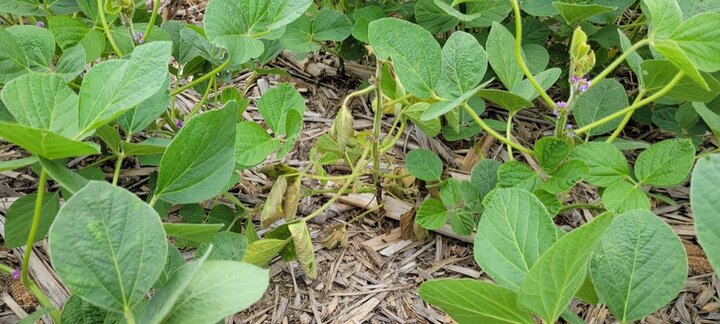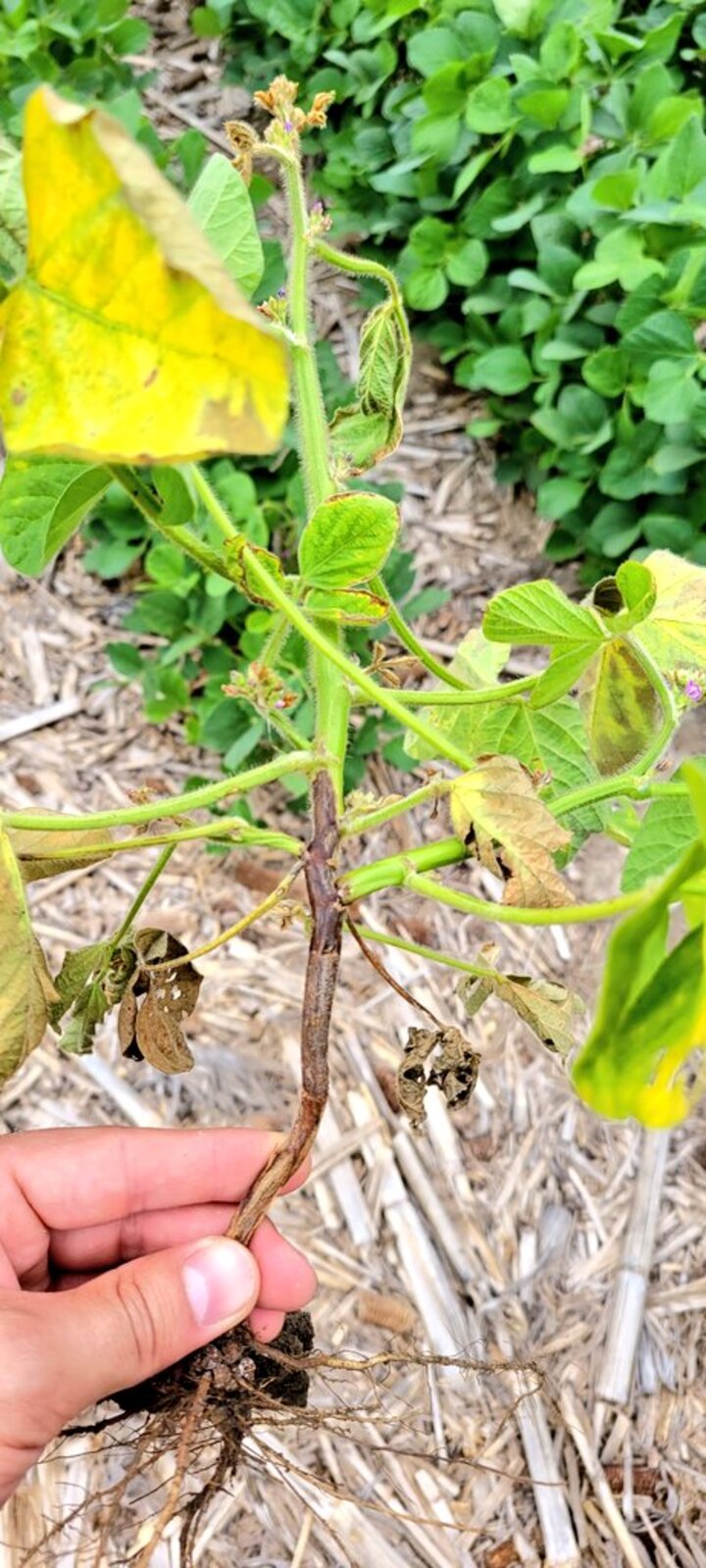We typically expect conditions for soybean seedling disease to be ideal early in the season during crop emergence. This season, conditions were dry and the crop experienced limited seedling disease. Disease levels were exceptionally low for oomycete pathogens like Pythium and Phytophthora. These oomycete pathogens are also known as the ‘water molds’, and that name provides a clue for why they were missing this spring. These pathogens rely on water to complete their lifecycle and when it is absent the spores will remain dormant in the soil.
Spores from Phytophthora sojae, which causes the soybean disease Phytophthora root and stem rot (PRSR), can infect soybean plants throughout the season and will often do so if moisture increases mid-season. With moisture increasing across the state in the last few weeks, PRSR is beginning to show up on farms.
PRSR symptoms, when infecting plants mid-season, often show up two weeks after a large rain event or even the first irrigation event of the season. Initial symptoms are often plant wilting and leaf chlorosis accompanied by a brown color on the exterior surface of the stem that extends from the soil surface up for two or three nodes (Figures 1 and 2). After these symptoms are present, the plant will typically dry-down quickly and drop leaves.


A key takeaway here is that Phytophthora is not manageable in season. However, this is a controllable disease if management is applied in the correct spot. Therefore, step one is to verify the disease is caused by Phytophthora and to carefully note what areas are experiencing symptoms. With this information, consider management options for the next season.
The first line of management is to select a resistant soybean variety. Varieties that contain a Phytophthora resistance gene are available. Additionally, varieties are commonly rated for Phytophthora field tolerance. Pairing both field tolerance and a resistance gene will provide the best control. However, if you have an area with high infection, consider planting that field last to give the soil more time to warm and dry out.
Seed treatments are also effective against PRSR. Mefenoxam and metalaxyl are effective but often require use at increased rates. See the UNL NebGuide: Management of Phytophthora Root and Stem Rot of Soybeans, G1785 for additional seed treatment information.
